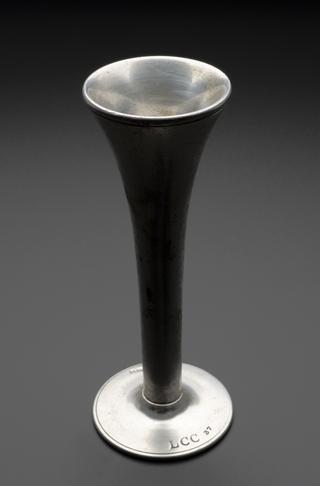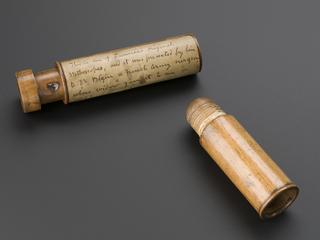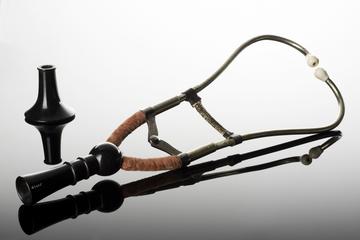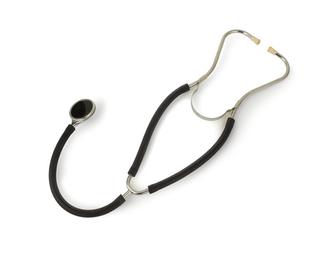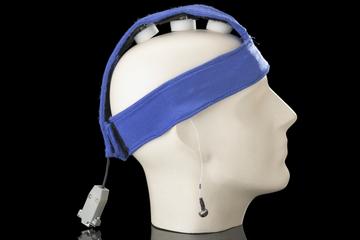




Fahrenheit clinical surface thermometer in leather case, by Steward of London, c.1880
In this small leather case, sits a surface thermometer designed by physician Joseph Mortimer Granville, (1833-1900). It works on the same principle as a standard thermometer: body temperature causes mercury to expand within a tube and the temperature is read off a graduated scale. However, this thermometer was placed upon the surface of the body. Temperature was read using a tiny magnifying glass also stored within the case.
The clinical thermometer differs from an ordinary thermometer. It measures only over a limited temperature range relating to body temperatures. Such instruments were used in medicine for some time before 1850. However, it was only then they began being used as precise means to diagnose disease. They were also used to predict a disease’s course through recognising the different temperature patterns of specific diseases.
Details
- Category:
- Clinical Diagnosis
- Collection:
- Sir Henry Wellcome's Museum Collection
- Object Number:
- A600080
- Materials:
- case, leather, case, velvet, blue, case, silk, white, case, brass, instrument, ivory, instrument, mercury, instrument, glass, instrument, metal, lens, glass and lens, horn
- Measurements:
-
overall: 38 mm x 42 mm x 50 mm, .05kg
- type:
- thermometer
